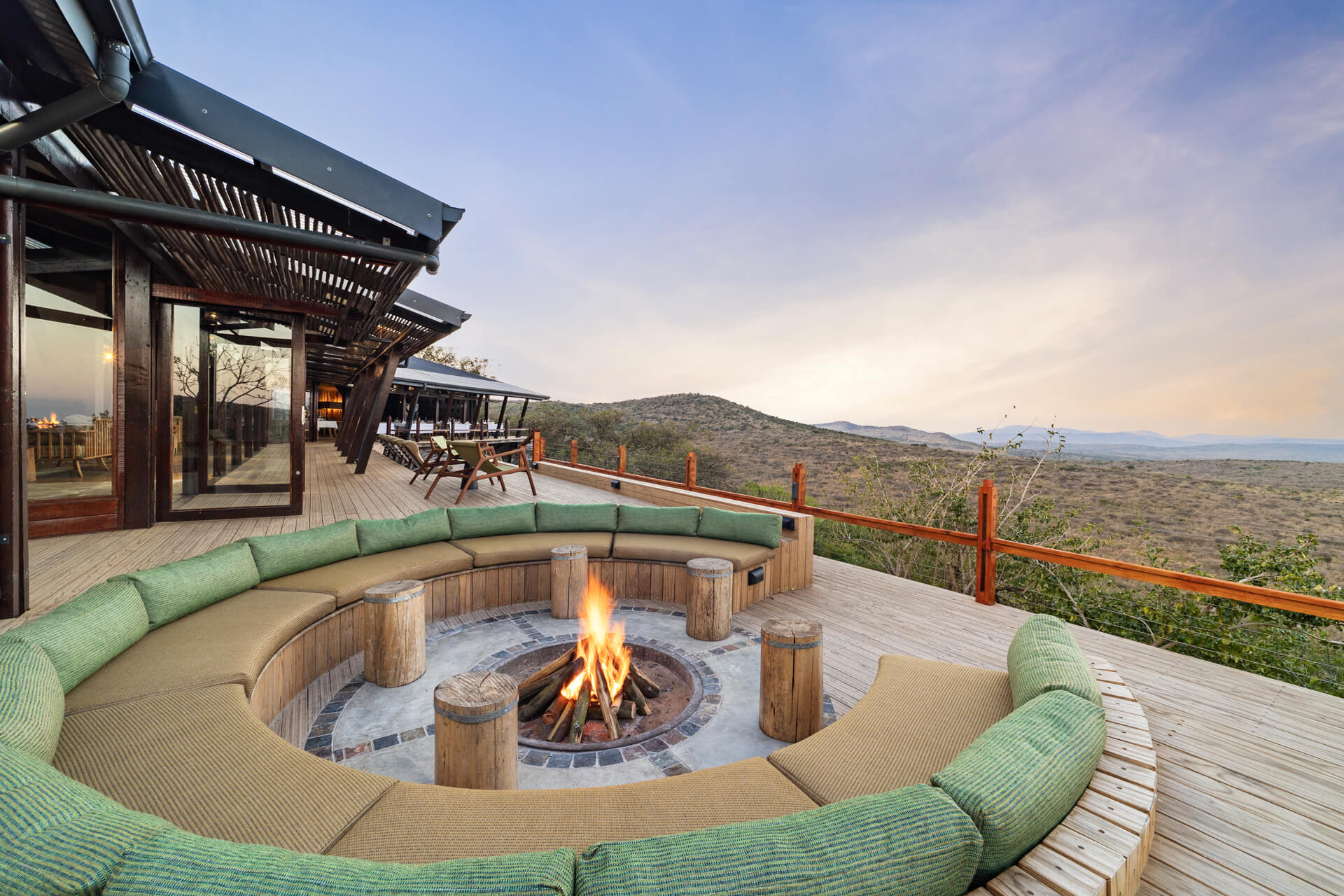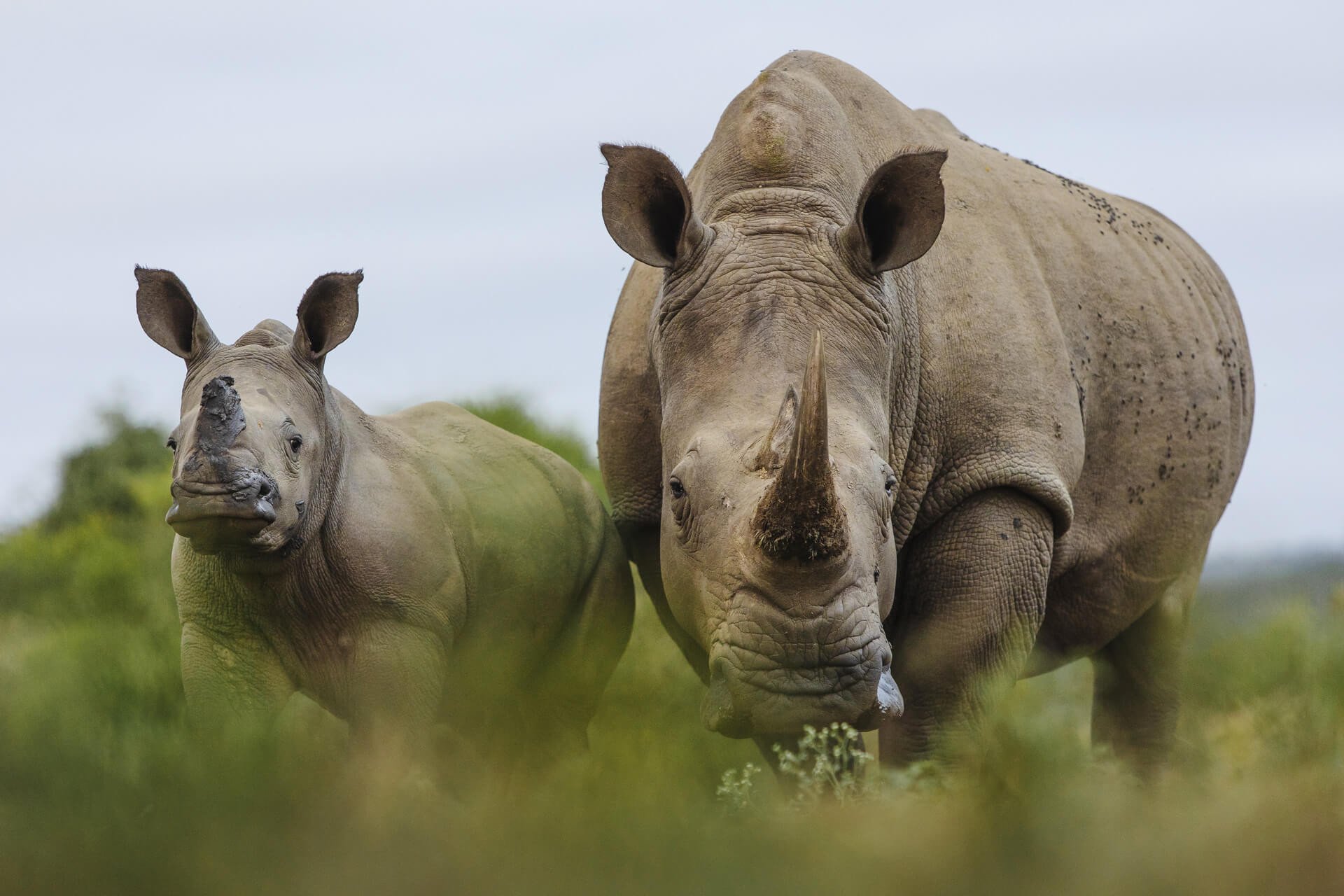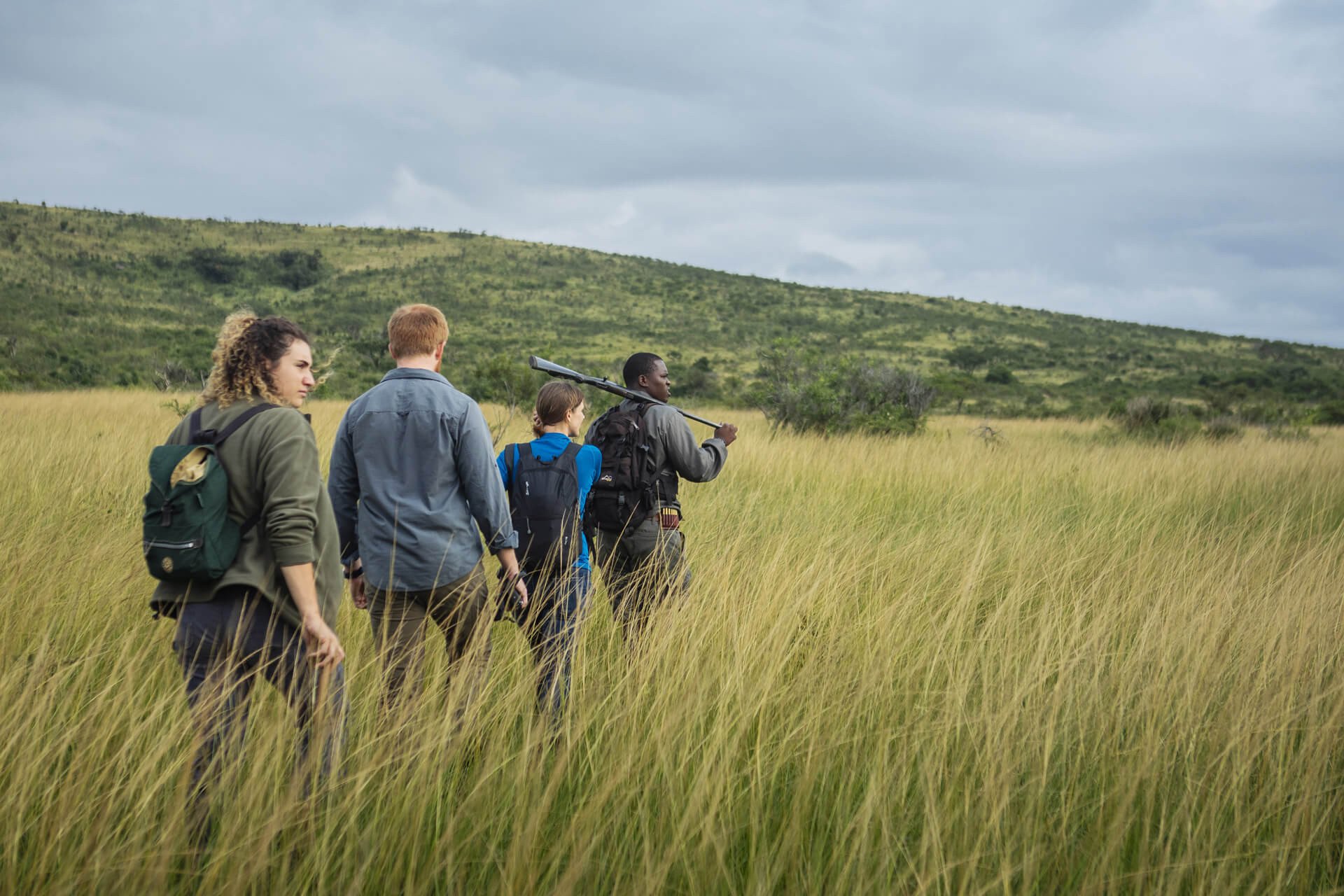blogBarefoot biophilia in Zululand
Posted in:Activities | Rhino Ridge Safari Lodge | Uncategorized | Wildlife
Posted on:June 29, 2021
Early one May morning, writer Hlengiwe Magagula and guide Jobe Nunu set out on foot from Rhino Ridge Safari Lodge to track white rhino. Together they discovered much more, including a shared affinity for appreciating nature’s wealth through slow-paced exploration.

Nunu Jobe is biophilic. Don’t worry, he is quite OK and does not need a cure. Biophilia is a lovely word. It describes something innate in humans, the “love of life or living systems”. It recognises that the human species is but one among millions of life forms and that our collective well-being is interwoven. Nunu is the embodiment of biophilia. As a trails guide in Hluhluwe-Imfolozi Park, his office is one thousand square kilometres of wilderness, and that’s a lot of living system to love.
From our first meeting at Rhino Ridge Safari Lodge I felt a kinship with Nunu, biophiliacs both of us. I found in him in crisp khakis, checking his rifle. We are about the same height, we speak the same language, near enough. His homeplace is in the borderlands of Kwa-Zulu Natal, Mozambique and eSwatini, close to my own.
Let your spirit meet the wilderness
Nunu’s motto is “let your spirit meet the wilderness”. He does not just talk the talk, he walks the walk – and barefoot. He saw my surprise and laughed. Don’t worry, he said, it’s not compulsory. It’s something he likes to do, to feel the cool morning earth, the tickle of themeda grass, the river mud between his toes. Sometimes connecting with nature can be very physical.
With the sunrise warming our backs, we wandered into the bushveld. In moments we were absorbed, just two more beings moving in the landscape. We chatted freely, something I’m not used to when on foot. Won’t we alarm the animals? Nunu explained that the normal rule for groups on trails is “no talking while walking”, and the main reason is that the guide is always listening to check for danger, so doesn’t want any chatter behind. Today, with just two of us, he wants the animals to notice we are around, and not take them by surprise, so it’s another style.
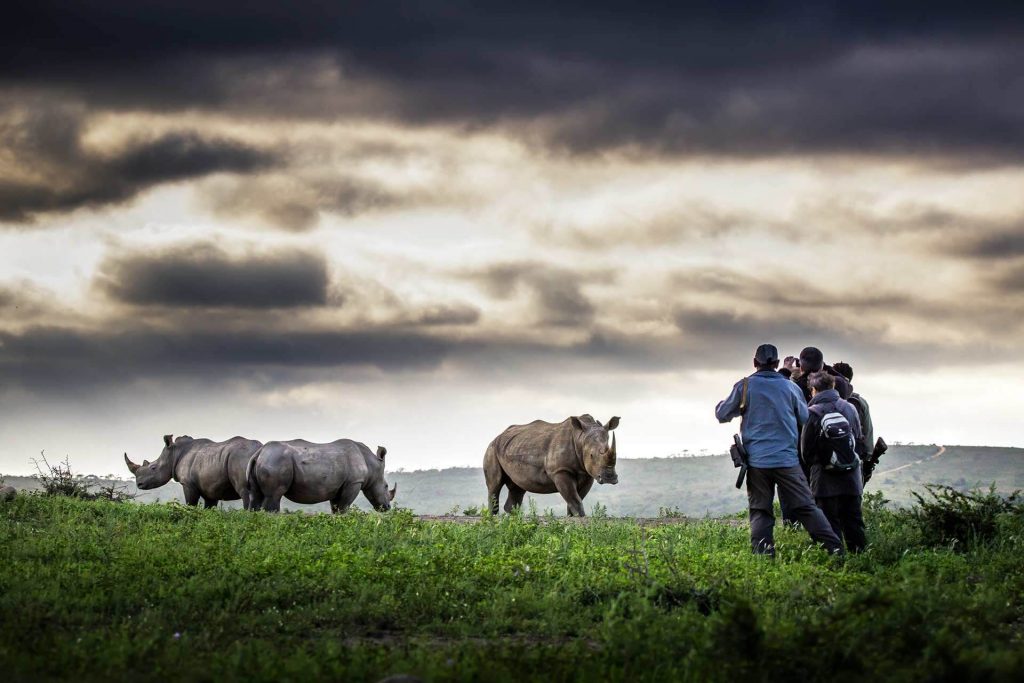
Nunu’s point was proved a few minutes later, our first meeting with that armoured car of the veld, Ceratotherium simum simum, the southern white rhinoceros. She was busy grazing, turning her head to look at us without pausing her business. Totally calm, like she was expecting us. She was at once strong and vulnerable – 133 of these magnificent animals were poached in Kwa-Zulu Natal in 2019. Nunu murmured greetings and good wishes, and we left her in peace.
The significance of the Buffalo Thorn
My mind was on senseless death when I realised Nunu was telling a story about uMlahlankosi, the buffalo thorn we were standing beside. I’d heard it before, but every Zulu has their own way of explaining the tree’s significance in afterlife transport, bringing spirits home to rest amidst the ancestors, to watch over the living. He carefully selected a branch, showing how the thorns are in pairs, one straight, and a barbed one in the opposite direction; Go wheresoever life is taking you, but don’t forget about the people you left behind, take care of them. A message for both the living and the dead.
Those barbs of the buffalo thorn certainly have a way of making us slow down when exploring. It’s another reason Nunu likes to go barefoot, forcing a pace that is kind to bare skin, and allows for slow discovery and sensory absorption. I fondled the pale green bark of a red ivory as Nunu extolled its wood. A tiny movement in the root system drew our eyes to the home of a trapdoor spider, a masterpiece of miniature engineering and camouflage.
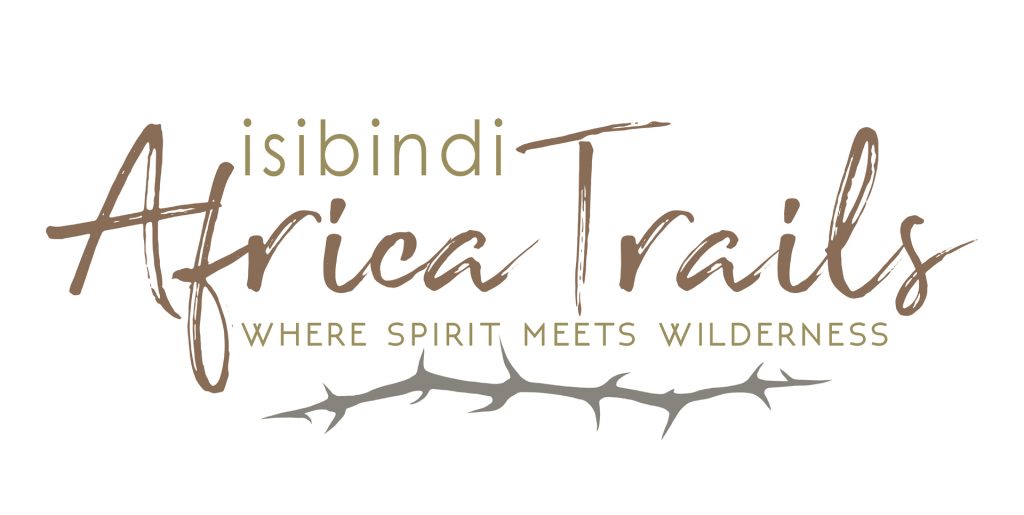
Stopping to investigate a fresh aardvark excavation, I watched Nunu flick at a fat tick without annoyance. Even these little biters are a vital part of the ecosystem, food for those aardvarks, snakes and guinea fowl. The diseases they carry play a role in naturally managing wildlife populations. The carcasses of these animals provide food for wild dogs, hyenas and other scavengers, who in turn feed the ticks.
The web of natural interdependence is endlessly fascinating and is best appreciated by leaving the wheels behind for a morning. We followed the spoor of a genet until it was lost in the tracks of a pack of wild dogs. Also known as the “painted wolf” these handsome animals are neither dog nor wolf, and are at risk of extinction, being on the endangered “red list” of the International Union for Conservation of Nature. Entire packs have been lost in the park due to canine distemper, a viral disease which is spread easily through the sharing of food.
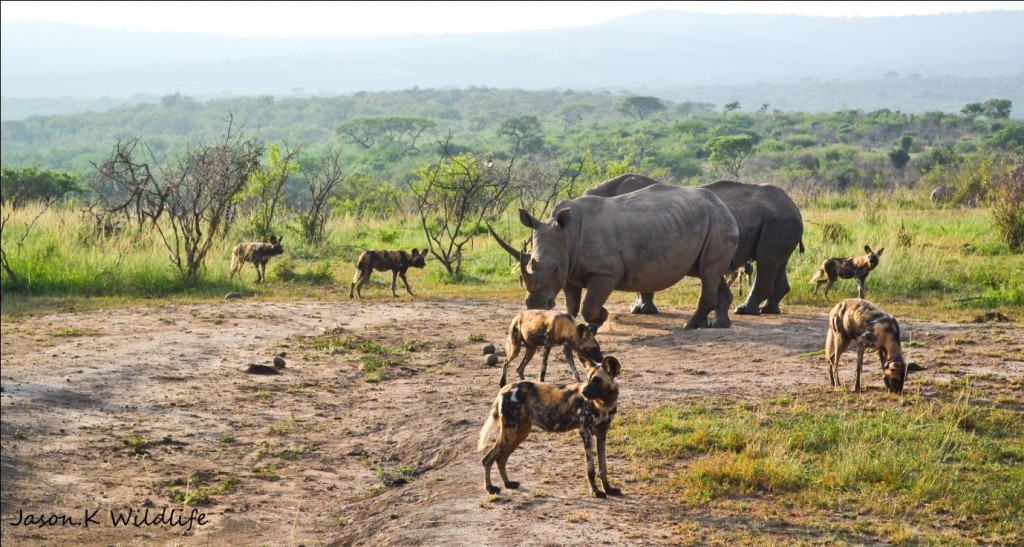
With the sun higher in the sky, we climbed back to Rhino Ridge lodge, to a breakfast with a view. Hills in shades of brown and green faded into the haze to the south and east. Verdant thickets traced the river systems, the Hluhluwe flowing into the Umfolozi.
When it comes to conservation, size matters. A park with the scale of Hluhluwe-iMfolozi is big enough to allow wildlife systems to cope with natural setbacks and rebound. Setting aside land for conservation can mean rolling back some traditional human uses, such as stock grazing and hunting. Rhino Ridge Safari Lodge is built on community land, with direct access to the Hluhluwe section of the park. Through job creation and concession licensing, it offers a sustainable commercial model for the community, and a win-win for nature.
Nunu Jobe knows that biophilia means recognising the human connections with nature, and the need for sustainable usage of land and nature’s riches. In addition to guiding, he works with Rhino Ridge to give guests the opportunity to learn about Zulu interdependence with the natural world. As well as walks to visit nearby communities, visitors can try a homestay, and see how traditional and sustainable crafts are kept alive. It’s a chance to take off your shoes and feel the natural energy of our wonderful earth.
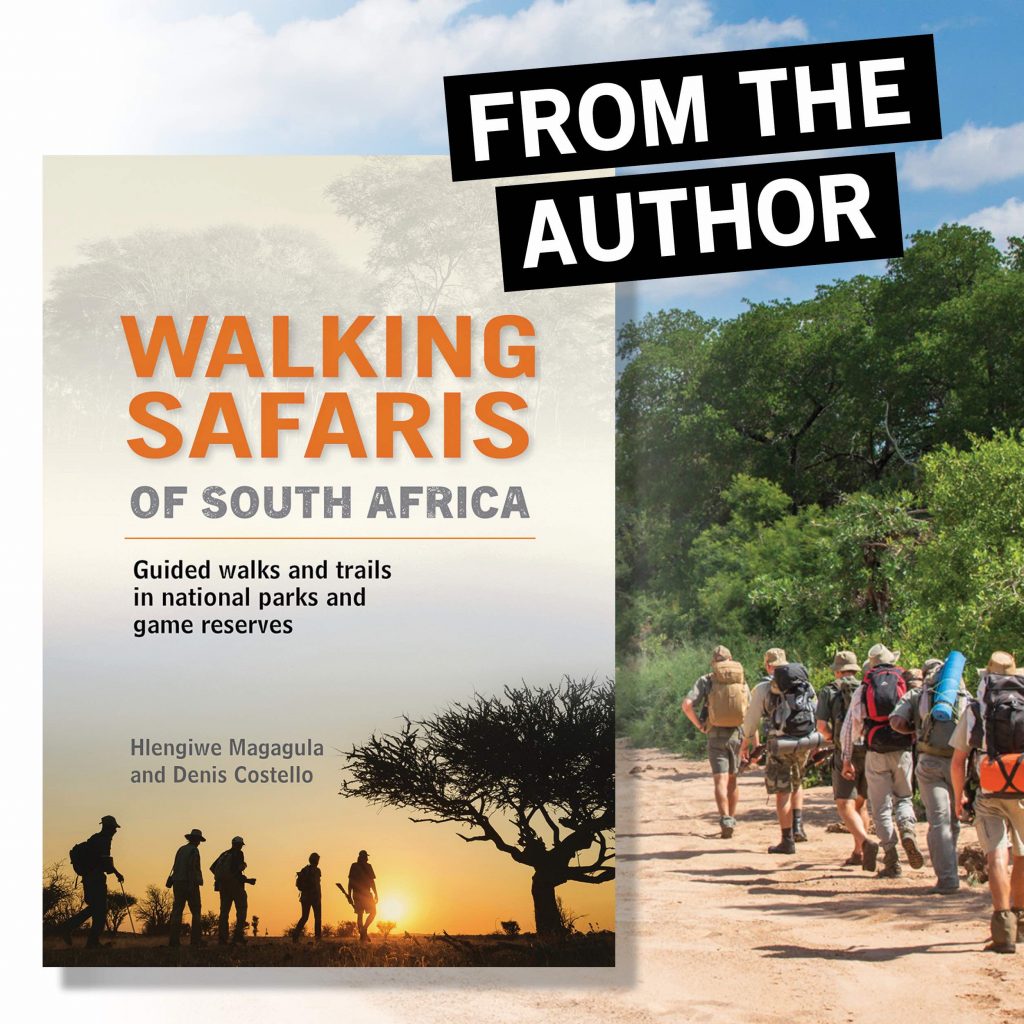
THE AUTHOR
This article is reproduced from Walking Safaris of South Africa by Hlengiwe Magagula and Denis Costello, newly published by Struik Travel & Heritage (ISBN 9781775846901, RRP R270). Both a practical guide and lyrical evocation of the pleasures of walking in wild places, the book covers 21 parks and reserves with big game and guided walks. It is widely available in bookshops in South Africa and via web bookstores worldwide. Order Walking Safaris of South Africa.


